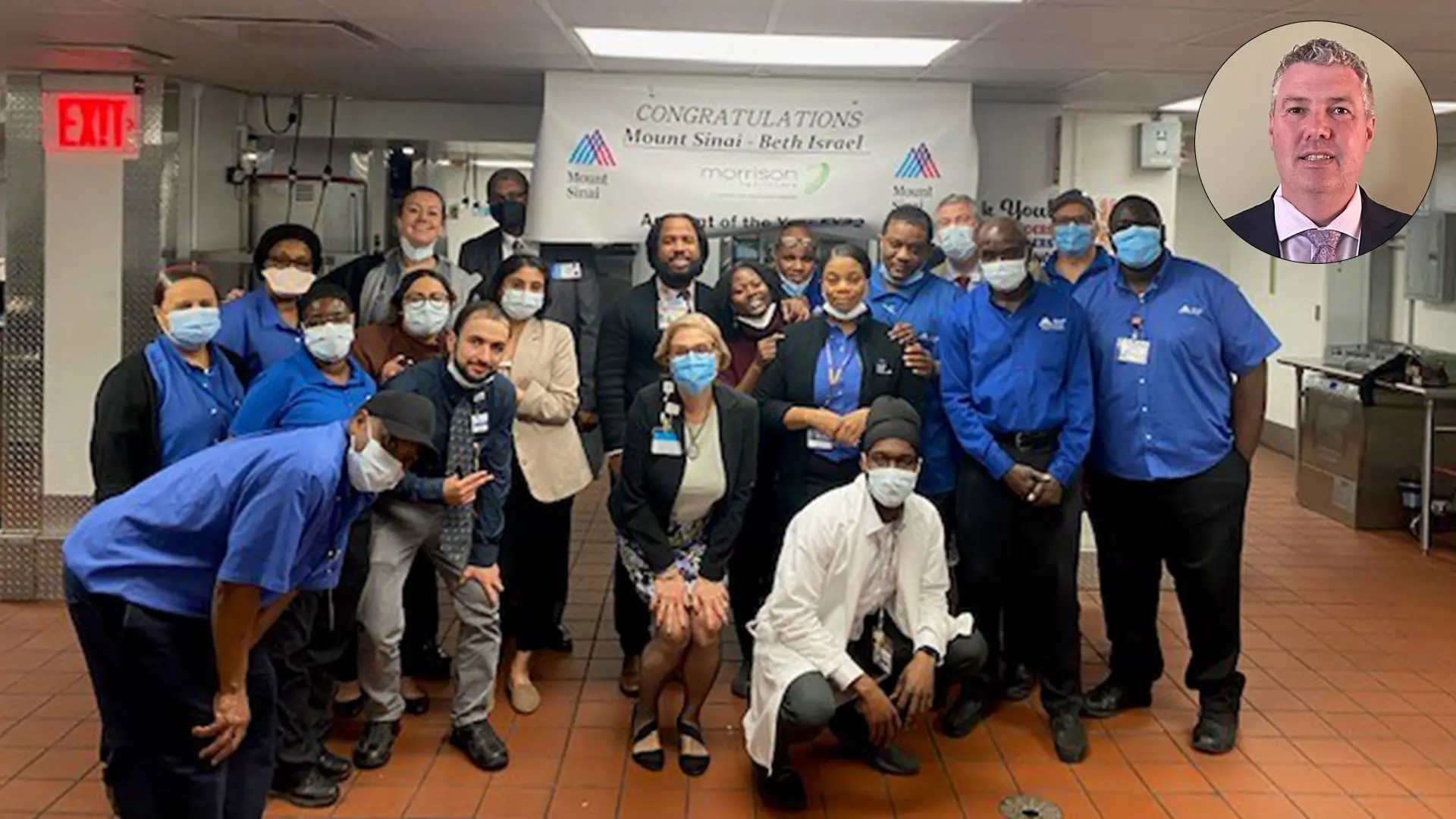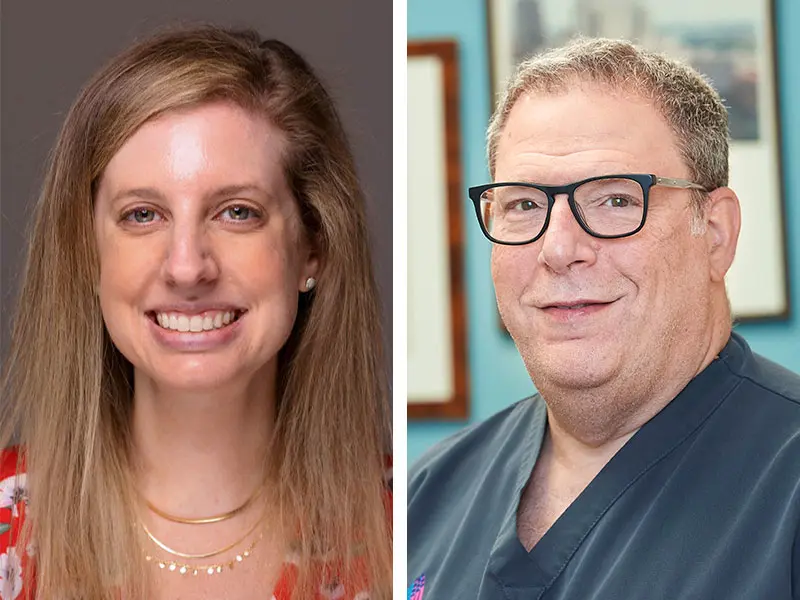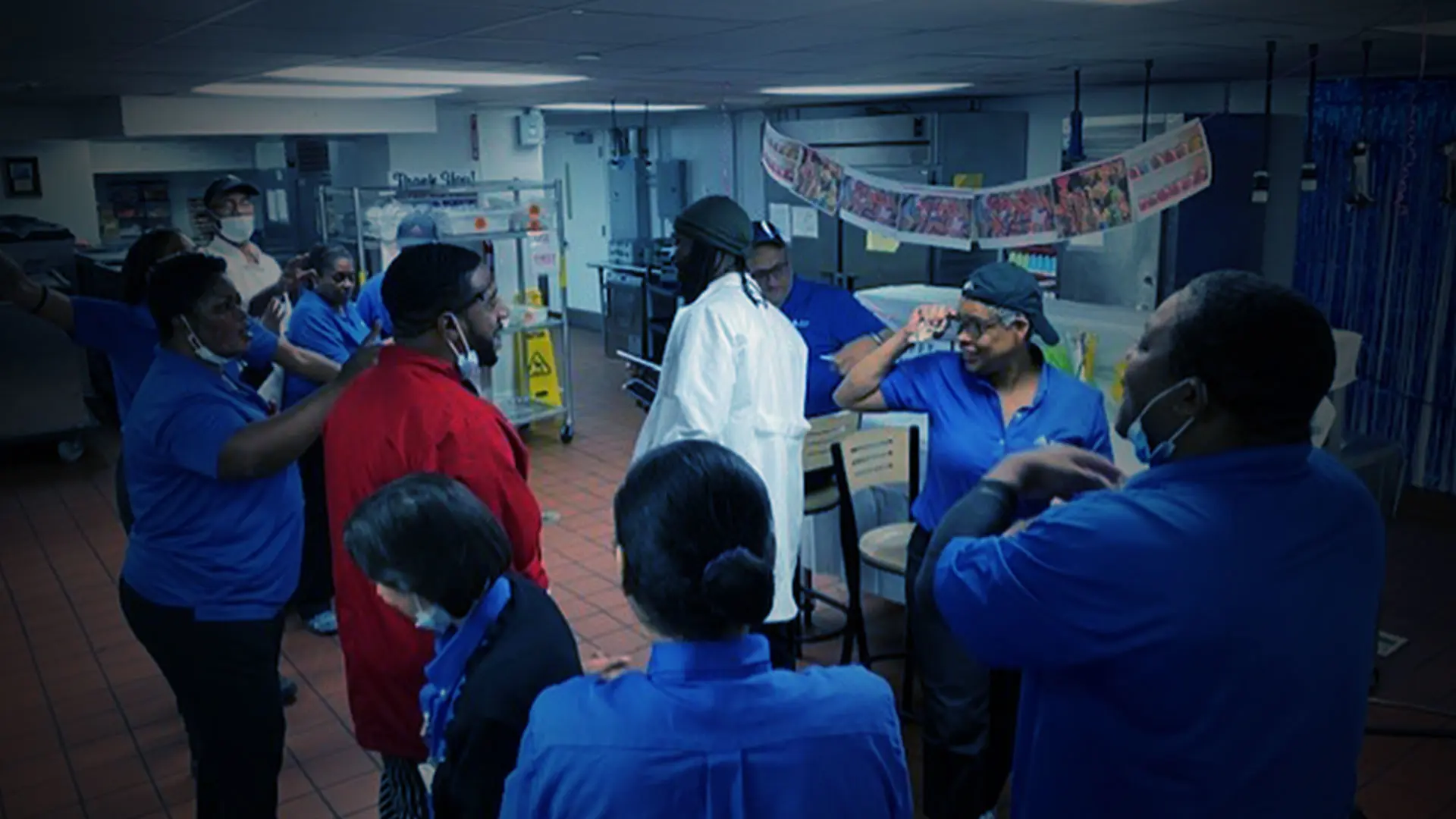In 2021, Mount Sinai launched its first confidential employee engagement survey, called Your Voice Counts (YVC), in partnership with Press Ganey. More than 21,000 Mount Sinai staff and faculty members shared their thoughts about how to make Mount Sinai the best place to work and receive care.
“Why does this survey matter? Because it helps make our Health System a better place to work, learn, teach, and receive care,” says Vicki LoPachin, MD, MBA, Senior Vice President and Chief Medical Officer, Mount Sinai Health System. Dr. LoPachin is the executive sponsor of Your Voice Counts, along with Jane Maksoud, RN, MPA, Senior Vice President and Chief Human Resources Officer, Mount Sinai Health System.
In the year since the survey was conducted, Mount Sinai leaders have been working diligently to translate feedback into tangible changes. Among the steps taken so far, leaders have shared results at town halls, team huddles, and department meetings. One of the key learnings was that one size does not fit all, as many departments and units took the survey data and created improvement plans specific to their areas.
Just one example is the Food Services team at Mount Sinai Beth Israel, David Hutchison, Director of Food Services at the site, says his strategy had a particular focus on regularly getting employee feedback. “We ask the people doing the job: How can we do this better? People want to be heard, and an engaged staff is a happy staff,” he says.

The Food Services team at Mount Sinai Beth Israel worked together to streamline the menu and improve the delivery schedule, says David Hutchison, Director, Mount Sinai Downtown Food and Nutrition (inset).
The top priorities for his staff were feeling valued and being listened to by management. In regular huddles, the staff members discussed their progress, were encouraged to provide feedback, and were given updates on changes in their department. Together they carried through two projects: Streamlining the menu and improving the delivery schedule. “Consistent follow-up is important," says Mr. Hutchison. “You need to live it every day.”
In the systemwide YVC survey, another key learning was that 90 percent of employees feel deeply connected to their work, but a large percentage of staff members, about 40 percent, had a hard time taking a break or disconnecting. Strategies that have been carried out to address this included shortening meeting times, creating guidelines about sending and responding to after-hours emails, or having meeting-free days.
The survey also showed that safety was a top priority. “Safety is connected to everything we do at Mount Sinai for our patients and for each other,” Ms. Maksoud says. In response to this finding, leaders are focusing on efforts to hire more staff, particularly in nursing, increase communications about safety, and create an environment where employees feel safe to report concerns. An important tool in this effort it the SafetyNet site, where employees who are connected to a Mount Sinai network can log in and report their concerns.
A second Your Voice Counts survey was launched on March 6, 2023, continuing the important work in employee engagement. The 15-minute confidential survey was open to all eligible Mount Sinai faculty, staff, residents, and others, and made available for three weeks. Responses to the survey are confidential. No one at Mount Sinai, not even managers and senior leaders, has access to how staff members respond individually. The survey vendor, Press Ganey, groups individual responses with the responses of other members of their team, unit, or department. To protect confidentiality, Press Ganey removes the link between individual responses and all personal information, including race and gender, before sharing with Mount Sinai.
“We can only truly grow if we are honest in our assessment and complete in our analysis of what works and what we must continue to improve,” Dr. LoPachin says. “The survey is confidential, and the feedback we receive—both positive and negative—is critical to our continued growth as a workplace and a community.”
Ms. Maksoud expressed thanks to all of the employees who completed the survey and shared their concerns and insights. “We continue to be inspired as we learn from you about how we can make Mount Sinai a better place to work.”
How Sites Acted on the YVC Survey's Insights
The Team: Mount Sinai Downtown Food and Nutrition
What improvements did your team choose to pursue, and how did you approach improvement work based on your results?
Our team chose to focus on increased engagement and visibility, with the staff and with our partners on the floors and support services. Our team also shared during the survey that they wanted a voice in decision-making, and transparency during any change process. Collaboration with the front-line staff was paramount for buy-in. We follow up with the staff and keep an open forum at our huddles to increase participation in the improvement process.
What are some best practices you’d like to share with others?
Encourage staff to voice their opinions and be sure that management is willing to listen. Recognize staff for the great work that they do regularly, with a simple handshake, a shout-out at a huddle, or even a STAR award. Make the process fun and engaging, and people will participate.
Who did you collaborate with, and what was the value of this collaboration?
Our staff are the front-line experts who serve our patients. As our department planned to make updates, we looked for advice and guidance from them. We also collaborated with other support services, such as Environmental Services, Transport, and Facilities, since they have experienced some of the same issues. We learned from their experiences.
What challenges have you faced, and what advice do you have for other teams starting this work?
Time needs to be set aside for discovery. I suggest putting it on the calendar so the proper uninterrupted time is given to making improvements.
– David Hutchison

Allison Dempsey, Director of Quality, Safety, and Patient Experience, Emergency Medicine, and Scott Ingber, MD, FACP, Senior Medical Director, Mount Sinai Doctors - Long Island, Health Network
The Team: Emergency Medicine Service Line
How did you approach improvement work based on your results?
With a template we created, sites put their action plans on paper and then presented at our EM System Patient Experience Committee. This was a great opportunity to celebrate the great work each site showcased.
What are some of the improvements your team decided to pursue?
Quarterly department town halls, Just Culture training, front-line staff participating in quality improvement projects, upgrading equipment, supporting staff PTO, focus on workplace violence prevention, and the Walk In Your Shoes program, with other roles and ancillary services.
What are some best practices you’d like to share with others?
When it comes to brainstorming action plans, department managers tend to know best. Senior leadership should defer to their expertise and trust that the managers know their team’s culture and what initiatives will work to create positive and sustainable change. We decided to harness the strengths identified in the Your Voice Counts survey and use them to cultivate enthusiasm to address the areas that staff felt needed improvement.
- Allison Dempsey
The Team: Mount Sinai Doctors - Long Island, Health Network
How did you approach improvement work based on your YVC results?
The YVC survey has served as a great opportunity at Mount Sinai Doctors - Long Island. We have regular meetings with each department to discuss the survey results, discussing where we have succeeded and what our challenges are. These meetings include all members of a department, from patient service representatives, medical assistants, nurses, nurse practitioners, PAs, and physicians. The Executive Director, Senior Medical Director, and a physician representative of the Mount Sinai Doctors - Long Island Executive Committee attend these sessions.
These meetings have allowed our staff to be heard and to voice their concerns about a myriad of issues, so that they feel invested in their Mount Sinai team. We have assured the staff that we hear them, and it is only by reflecting on certain issues and operations that we can pivot and improve upon them.
What are some of the improvements your team decided to pursue?
We chose to focus on enhancing communication and connectivity with our employees. Many of these meetings have gone over the hour allotted, which is a great sign that we are constructively engaging with each other. To enhance communication, we have launched a newsletter from the Executive Director, Sarah Curtis, called the “The Mount Sinai Monthly.”
We look forward to the next Your Voice Counts survey in March 2023 and continuing our ongoing conversations with our Mount Sinai Doctors Long Island teams.
- Scott Ingber, MD

Diane Rode, Senior Director, Pediatrics, Child Life, Patient and Family Experience, Jenna Meyer, Senior Director, Emergency Department, Rapid Evaluation and Treatment Unit
The Team: Pediatrics, Child Life, Patient and Family Experience
How did you approach sharing YVC results?
We created a committee of leaders from Nursing, Physicians, Administration, Child Life, and Social Work to construct a plan to share results in a series of role-specific mini town halls. After this, each cohort leader led a series of “listening sessions” with staff to further explore themes from the survey. We all focused on the YVC area of “Communication” when delivering results and facilitating listening sessions
How did you approach improvement work based on your results?
Each leader identified a list of actionable items to pursue for their team with specific timelines. In Child Life, we restructured our daily huddle and staff meetings, and our coverage schema, which is now newly designed
What are some best practices you’d like to share with others?
Listening sessions can be powerful tools to empower staff. In Child Life, we also have a Shared Governance model of practice that engages staff in specific councils that collectively help make decisions regarding departmental practice, in education and professional practice.
- Diane Rode
The Team: Rapid Evaluation and Treatment Unit, The Mount Sinai Hospital
How did you approach improvement work based on your results?
We reviewed the results with the nursing leadership team and met 1:1 with staff to gather further feedback by asking them further questions on a paper survey. We chose to focus on our lower-scoring strengths and higher-scoring weaknesses, to determine three focus areas: professional development, employee recognition, and staff engagement and wellness. We assigned a member of our ED nursing leadership team to be responsible for each one.
What are some of the improvements your team decided to pursue?
Professional development: Provided additional training for triage, charge, pediatric ED, and ultrasound guided IV, and hosted TeamSTEPPS, BeSAFE, and CPI classes.
Employee recognition: Increased ED senior leadership on the floors, including the night shift, STAR, Great Catch, Employee of the Month and Operation Recognize.
Staff engagement and wellness: Engaged the staff in shared governance through transparency on metrics and actions, encouraging staff to participate on various committees and councils, hosted new-hire forums, lunch and learns, and quarterly town halls, and added new equipment.
What are some best practices you’d like to share with others?
We collaborated with Mount Sinai Hospital and Mount Sinai Health System leadership and, more importantly, with staff.
We build in reflection time midway through the improvement process to check in with staff.
We plan our social and education events months in advance to make sure everyone can work their schedule to attend.
We share the larger strategy behind our work with staff in weekly email summaries and in town halls so that they understand the “why” behind all that we do in the ED/RETU.
What challenges have you faced and what advice do you have to other teams who are starting this work?
The initial barrier is to break the inertia and move toward your staff’s goal (not your goal).
- Jenna Meyer

Mona Kim, Program Manager, Mount Sinai Health System Otolaryngology; and Kristen Cittadino, Senior Director, Mount Sinai Morningside Ambulatory Care
Otolaryngology
How did you approach improvement work based on your results?
We identified four areas to focus our improvement efforts on (salary/staffing, job stress, recognition, and career opportunities) and created actionable items.
We collaborated with our Medical Director, who is our Patient Experience champion, and site leaders.
What are some of the improvements your team decided to pursue?
We increased rounding sessions, security walk-throughs, and communicating career/growth opportunities. We involved faculty in helping lead our recognition of employees. We reviewed salary and staffing, and communicated about this with staff.
What are some best practices you’d like to share with others?
We encourage an open-door policy so that staff feel comfortable coming to managers. We review our patient comments weekly to identify staff to recognize with a STAR.
- Mona Kim
Mount Sinai Morningside Ambulatory Care
How did you approach improvement work, and what are some improvements your team decided to pursue?
After carefully reviewing the employee engagement survey results, we shared the TDL tools and helped our practice managers (PMs) engage their teams in developing action plans to address the areas of concern. We also recommended that the PMs and administrators take the YVC learning series on PEAK.
We heard from our PMs that they wanted more opportunities for training and educational resources. We began implementing new approaches to our monthly meetings by including speakers from different departments.
What are some best practices you’d like to share with others?
Thank your team for their feedback and participation. Try to remain professional and unbiased when reviewing the results. Give yourself a chance to thoroughly review, digest, and understand your results before making any assumptions or implementing any actionable steps. Celebrate your strengths, and then explore the areas that need improvement.
Staff reported challenges regarding survey confidentiality. My advice is to try to create buy-in early on. Talk about the survey in meetings and huddles, and let the staff know you are interested in their feedback. We utilized our PM monthly meeting as a safe place to talk about the survey and encouraged the PMs to present their ideas and action plans.
- Kristen Cittadino
In our patients' own words
“One thing I noticed about the team, whether they were the surgeons, or the nurses, or the preop, or the postop, or the recovery team, or the scheduling team, everyone said please and thank you to each other. They were cordial to each other in the hallways, and they were all calm. This really has a calming effect on someone going into surgery and coming out of surgery; it makes them feel that they're in a safe zone. So I think the cordial mannerisms of your staff, which were so positive, are not to be overlooked. And I made sure I told a couple of them that I was extremely impressed by the way they treated each other and that it made me feel safe and cared for. So you can get all the education in the world, but it's how you treat people that actually sustains healing.”
– Ambulatory Surgery patient, The Mount Sinai Hospital
“They showed up with a bright disposition. They made me feel that they were going to get to the root of the problem. They kept checking in. I didn't feel like I was forgotten. Amazing.”
– Emergency Department patient, Mount Sinai West
